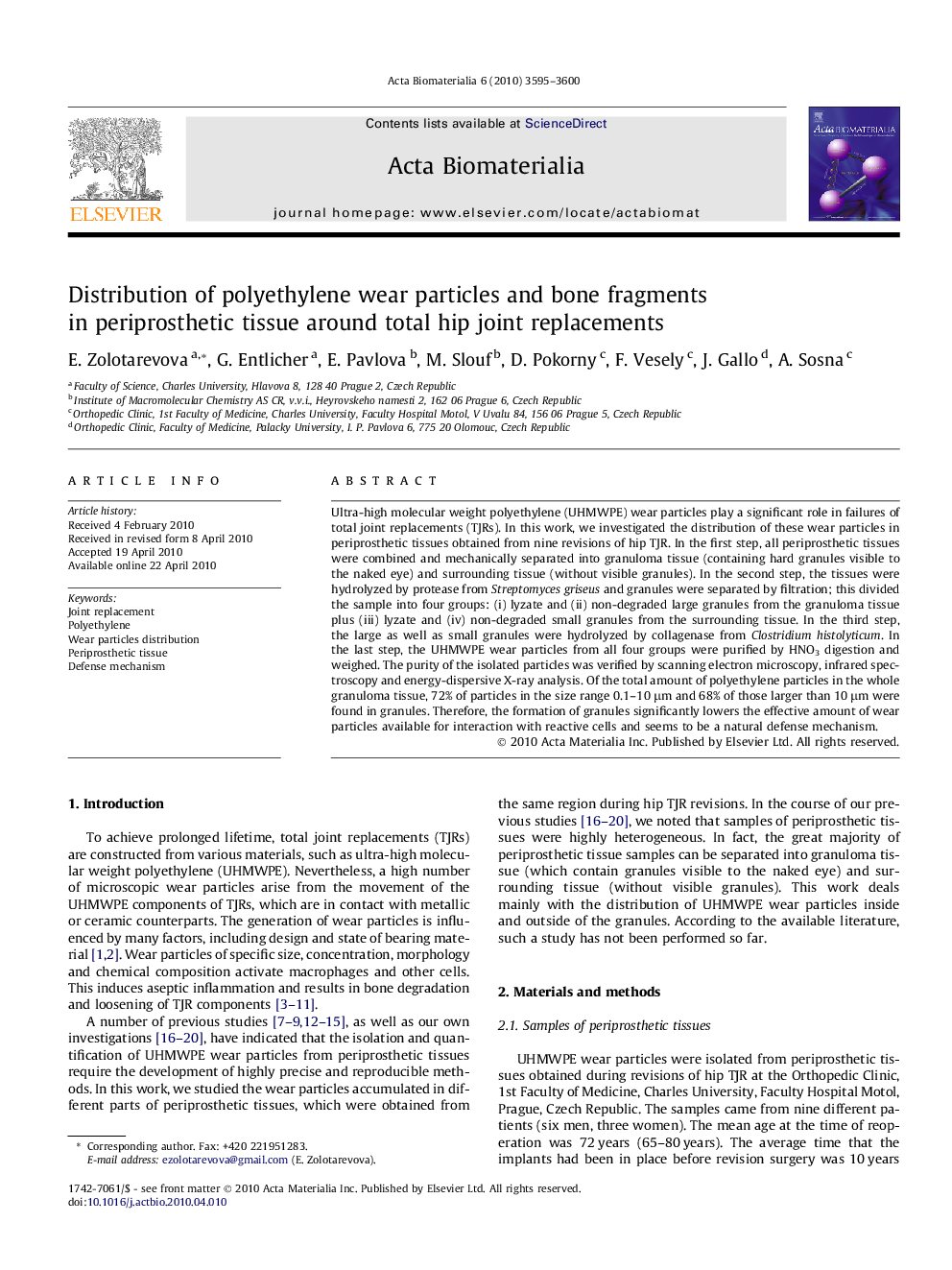| Article ID | Journal | Published Year | Pages | File Type |
|---|---|---|---|---|
| 2154 | Acta Biomaterialia | 2010 | 6 Pages |
Ultra-high molecular weight polyethylene (UHMWPE) wear particles play a significant role in failures of total joint replacements (TJRs). In this work, we investigated the distribution of these wear particles in periprosthetic tissues obtained from nine revisions of hip TJR. In the first step, all periprosthetic tissues were combined and mechanically separated into granuloma tissue (containing hard granules visible to the naked eye) and surrounding tissue (without visible granules). In the second step, the tissues were hydrolyzed by protease from Streptomyces griseus and granules were separated by filtration; this divided the sample into four groups: (i) lyzate and (ii) non-degraded large granules from the granuloma tissue plus (iii) lyzate and (iv) non-degraded small granules from the surrounding tissue. In the third step, the large as well as small granules were hydrolyzed by collagenase from Clostridium histolyticum. In the last step, the UHMWPE wear particles from all four groups were purified by HNO3 digestion and weighed. The purity of the isolated particles was verified by scanning electron microscopy, infrared spectroscopy and energy-dispersive X-ray analysis. Of the total amount of polyethylene particles in the whole granuloma tissue, 72% of particles in the size range 0.1–10 μm and 68% of those larger than 10 μm were found in granules. Therefore, the formation of granules significantly lowers the effective amount of wear particles available for interaction with reactive cells and seems to be a natural defense mechanism.
